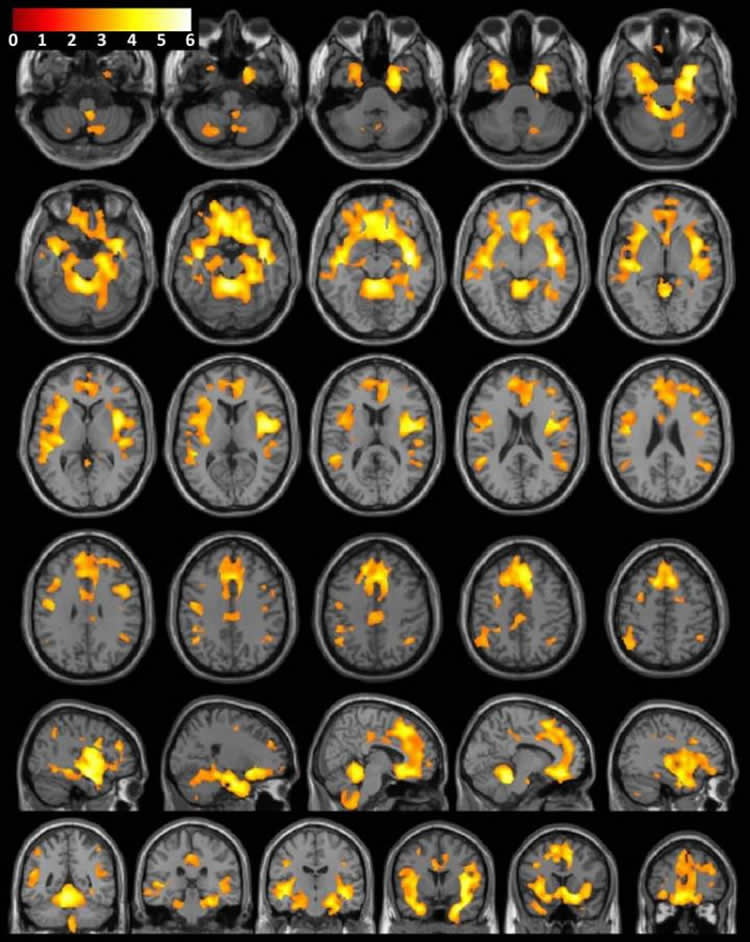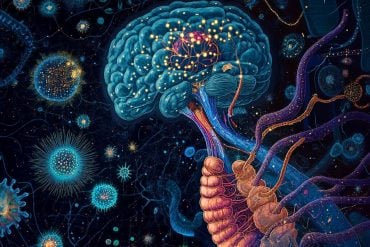Stimulant drug abuse has long-term effects on brain volume in women, according to a new study published online in the journal Radiology. Brain structures involved in reward, learning and executive control showed vast changes even after a prolonged period of abstinence from drug use.
“We found that after an average of 13.5 months of abstinence, women who were previously dependent on stimulants had significantly less gray matter volume in several brain areas compared to healthy women,” said the study’s senior author, Jody Tanabe, M.D., professor of radiology, vice chair of Research, and Neuroradiology Section Chief at the University of Colorado Denver School of Medicine. “These brain areas are important for decision making, emotion, reward processing and habit formation.”
For the study, Dr. Tanabe and colleagues sought to determine how the brains of people previously dependent on stimulants differed from the brains of healthy people.
“We specifically wanted to determine how these brain effects differed by gender,” Dr. Tanabe said.

The researchers analyzed structural brain magnetic resonance imaging (MRI) exams in 127 men and women, including 59 people (28 women and 31 men) who were previously dependent on cocaine, amphetamines, and/or methamphetamine for an average of 15.7 years, and 68 healthy people (28 women and 40 men) who were similar in age and gender. The MRI results showed that after an average of 13.5 months of abstinence, women who were previously dependent on stimulants had significantly less gray matter volume in frontal, limbic and temporal regions of the brain.
“While the women previously dependent on stimulants demonstrated widespread brain differences when compared to their healthy control counterparts, the men demonstrated no significant brain differences,” Dr. Tanabe said.
The researchers also looked at how these brain volume differences were related to behaviors. They found that lower regional gray matter volumes correlated with behavioral tendencies to seek reward and novelty.
“Lower gray matter volumes in women who had been stimulant dependent were associated with more impulsivity, greater behavioral approach to reward, and also more severe drug use,” Dr. Tanabe said. “In contrast, all men and healthy women did not show such correlations.”

According to Dr. Tanabe, the results may provide a clue to the biological processes underlying the clinical course of stimulant abuse in men and women.
“Compared to men, women tend to begin cocaine or amphetamine use at an earlier age, show accelerated escalation of drug use, report more difficulty quitting and, upon seeking treatment, report using larger quantities of these drugs,” she said. “We hope that our findings will lead to further investigation into gender differences in substance dependence and, thus, more effective treatments.”
About this neurology research
The study first author was Michael Regner, M.D., a radiology resident and PhD graduate student
Funding: The research was funded by the NIH.
Source: Radiological Society of North America
Image Credit: The images are credited to Radiological Society of North America
Original Research: Full open access research for “Sex Differences in Gray Matter Changes and Brain-Behavior Relationships in Patients with Stimulant Dependence” by Michael F. Regner, Manish Dalwani, Dorothy Yamamoto, Robert I. Perry, Joseph T. Sakai, Justin M. Honce, and Jody Tanabe in Radiology. Published online July 14 2015 doi:10.1148/radiol.2015142541
Abstract
Sex Differences in Gray Matter Changes and Brain-Behavior Relationships in Patients with Stimulant Dependence
Purpose
To investigate whether sex modulates the effects of stimulant dependence on gray matter volume (GMV) in patients who have achieved long-term abstinence and to characterize how sex modulates GMV according to specific behavioral measures, such as dependence symptom count, behavioral approach, and impulsivity.
Materials and Methods
Colorado Multiple Institutional Review Board approval and informed consent were obtained. In this prospective parallel group study, 127 age- and sex-matched participants (68 control subjects [28 women, 40 men] and 59 patients with stimulant dependence [28 women, 31 men]) underwent T1-weighted spoiled gradient-echo inversion recovery magnetic resonance imaging of the brain at 3 T. Images were segmented by using voxel-based morphometric software. After adjustment for age, education, and head size, the effects of group according to sex on GMV and main effects were analyzed throughout the whole brain by using an analysis of covariance family-wise cluster corrected for multiple comparisons, with a threshold P value of less than .05. Dependence symptom count and behavioral measurements were correlated with GMV in the whole brain and in five a priori regions of interest.
Results
The effects of group according to sex on GMV were significant in numerous regions (P < .001). Compared with female control subjects, women with stimulant dependence had significantly lower GMV in widespread brain regions (P < .001). There were no significant differences in GMV between male control subjects and men with stimulant dependence (P = .625). Dependence symptom count negatively correlated with GMV in the nucleus accumbens in women (left: r = −0.364, P = .047; right: r = −0.407, P = .031) but not in men (left: r = −0.063, P = .737; right: r = −0.174, P = .349). Behavioral approach (P = .002) and impulsivity (P = .013) correlated negatively with frontal and temporal GMV changes in women with stimulant dependence but not in the other groups.
Conclusion
Vast changes in GMV were observed in women with stimulant dependence after prolonged abstinence, but were not observed in men. Sexual dimorphism in drug-related neuroanatomic changes and brain-behavior relationships may be mechanisms underlying the difference in clinical profiles of addiction between women and men.
“Sex Differences in Gray Matter Changes and Brain-Behavior Relationships in Patients with Stimulant Dependence” by Michael F. Regner, Manish Dalwani, Dorothy Yamamoto, Robert I. Perry, Joseph T. Sakai, Justin M. Honce, and Jody Tanabe in Radiology. Published online July 14 2015 doi:10.1148/radiol.2015142541






